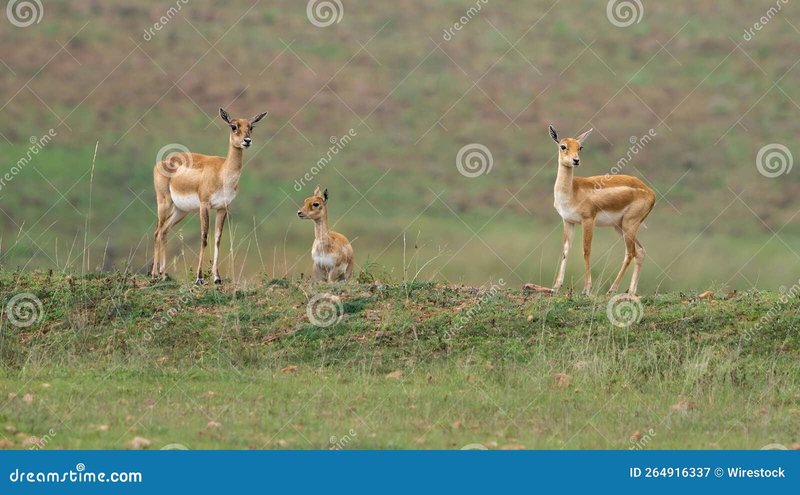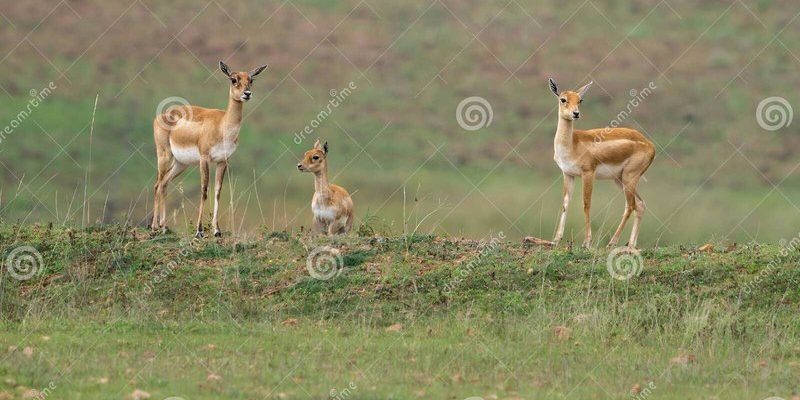
If you’ve ever watched a nature documentary or stood in awe at a wildlife reserve, you may have noticed how antelope mothers seem to have a sixth sense when it comes to protecting their young. From timing births to choosing safe locations, these mothers’ actions are instinctual and calculated. Let’s explore the various ways antelopes raise their young and why these methods matter for their survival in the wild.
Choosing the Right Time to Give Birth
Timing is everything for antelopes when it comes to giving birth. Most species of antelope synchronize their calving season to coincide with the wet season, which provides plenty of fresh grass and access to water. You might wonder, why is this important? Simply put, more resources mean healthier calves.
Through seasonal breeding, antelope mothers maximize their chances of survival. If they give birth when food is abundant, their calves have a better opportunity to grow strong and thrive. It’s like planning a family picnic when the weather is perfect—you want all the conditions to be just right.
Different species have particular preferences when it comes to timing. For instance, wildebeests, a type of antelope, usually give birth en masse, creating a sea of calves that can confuse predators. This herd strategy lowers the risk for individual mothers, while also helping the young ones blend in with their peers.
Finding Safe Locations for Calving
Once it’s time to give birth, antelope mothers are very particular about where they choose to calve. They often select secluded spots, away from predators, where they can keep their newborns safe. Picture a secret hideaway tucked away in the tall grass—a perfect nursery!
These locations are not just random choices. They are often strategically chosen based on the mother’s knowledge of the land and the potential threats in the area. Mothers will often scout out various sites beforehand, ensuring they find a safe spot protected from curious eyes.
For example, female impalas might choose dense bushes where their young can hide from predators. This instinctual knowledge is vital, as it gives the calves a fighting chance during those vulnerable early days.
The First Days of a Calf’s Life
The first few days of a calf’s life are crucial. Newborn antelopes are remarkably quick to stand and run shortly after birth, a behavior that can be lifesaving. Imagine being born and needing to sprint for your life just moments later—that’s the reality for these little ones!
In their early days, calves are usually kept hidden by their mothers. They often lie flat in the grass to avoid detection, blending perfectly into their surroundings. This natural camouflage helps protect them from predators such as lions and hyenas who might be lurking nearby.
During this time, the mother remains close but keeps her distance just enough to ensure the calf doesn’t attract unwanted attention. Imagine a mother keeping a watchful eye, while also allowing her child to explore a little. The balance of independence and protection is key in those early days.
Feeding and Nutritional Needs
As calves grow, their nutritional needs change. In the beginning, they rely solely on their mother’s milk, which is packed with nutrients to help them grow strong. Interestingly, antelope mothers often produce a special type of milk rich in fats and proteins during the first few weeks, tailoring their diet to suit their newborn’s needs.
As the calves mature—usually within a few months—they start to graze on grass and other plants. This gradual shift is important because it helps them learn to find their own food. You might find it fascinating how important this transition is; it’s not just about eating but also about developing foraging skills that will serve them for life.
Mothers continue to nurse their young for several months, but they’ll also lead them to good grazing areas. Imagine them walking side by side, mother teaching calf the art of finding the best patches of grass.
Protection from Predators
Antelope mothers are naturally protective of their calves. In the wild, threats are ever-present, and these protective instincts ensure that young ones have a fighting chance. Mothers often form a bond with their calves that includes vocalizations and body language, letting the calf know when to hide or when it’s safe to roam.
When danger arises, such as a lurking predator, mothers will usually display a behavior known as distraction displays. This means that they might make loud noises or run in circles to divert the predator’s attention from their hidden young. It’s like playing a game of “look over here!” while the real prize is safely tucked away.
This protective behavior isn’t just instinctual; it’s learned over time. Experienced mothers, often older and wiser, tend to display more effective strategies, passing on valuable knowledge to their calves.
Socialization and Learning
As calves begin to grow, socialization becomes a key part of their development. They play and interact with other calves in the herd, learning essential social skills that help them integrate into the group. Think of it as attending school—where they not only learn to communicate but also to establish their place within the herd hierarchy.
These playful encounters are crucial for their physical development too. Chasing each other, practicing mock fights, or simply frolicking in the grass helps build strength and agility. This playful behavior isn’t just for fun; it prepares them for the real challenges they’ll face as adults.
Calves will also observe their mothers and other adults in the herd, picking up important life lessons. From foraging techniques to understanding the alarm calls, these learning moments are vital for their survival as they mature.
Leaving the Nest: Independence
Eventually, the time comes for calves to become independent. While the exact age can vary based on species, many antelope calves will start to venture out on their own by around six months. This transition can be bittersweet for mothers, who’ve invested so much in their young.
Before they fully leave their mother’s side, they’ll learn to graze effectively, recognize potential dangers, and social cues from their peers. This gradual process ensures they’re well-equipped to face the wild. You might say it’s like preparing for a big exam—by the time they’re ready to leave, they’re fully equipped with all the knowledge needed for the real world.
It’s fascinating to think about how antelopes navigate their relationships. Even after calves become independent, they often stay close to their mothers and the herd, forming lifelong bonds within the group.
In conclusion, the journey of how antelopes raise their young in the wild is a beautifully complex dance of instinct, protection, and learning. From timing births to socializing, each aspect of their parenting plays a crucial role in the survival of their species. Watching this process unfold in nature is a reminder of the amazing ways life adapts and thrives in the wild. As we learn about these remarkable animals, it deepens our appreciation for the balance of nature and the intricate web of life that surrounds us.

